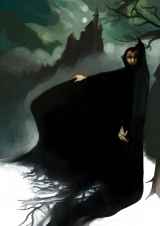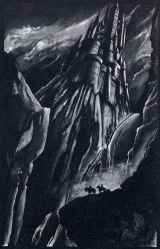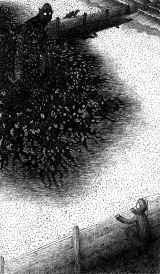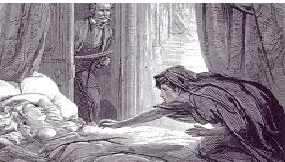5 ways Anne Rice Rewrites Vampire History Into the (Queer) Present

Anne Rice’s Interview with the Vampire tracks the tale of love and loss, friend and foe and light and dark in the covert world of vampires, as ancient vampire, Louis, narrates his life-story to a young, human interviewer. The main theme of the novel is homosexuality, and the territory that comes with living this socially ‘deviant’ lifestyle. Rice’s aim is simple – to change the status of the homosexual from alien ‘other’ to socially accepted, complex human being – to portray homosexuality as something that is natural, that is innate to one’s being, without having to fully define or, indeed, homogenise the individual. It is certainly not hard to see the homosexual connotations in the novel. Turn to any page and it is no doubt filled with Rice’s tantalisingly orgasmic descriptions of the man-on-man sucking of blood. Lusty protagonists, vampires Lestat and Louis, even adopt a toddler-turned-vampire, Claudia, to form a queer family trio.
The question is: why choose the vampire for such a theme? Don’t get me wrong, the vampire has always been associated with that which is ‘deviant’ and sexual. Visions of the monstrous, yet strangely attractive, vampire appearing through the bedroom window of unsuspecting virginal women are, and have always been, familiar. However, typically, the focus has been on the dangers of such sexual encounters, the Christian ideology of abstinence being the only moral conveyed – if you allow a man to enter your room at night, you will die a terribly violent death, girls! The arguably most iconic vampire, Stoker’s Dracula, is a character no one particularly sympathises with, and though there is something erotic about his bloodlust, no reader is dying to jump into bed with him straight away. As Nina Auerbach writes, Stoker’s Dracula is ‘animal rather than phantom, mesmerist rather than intimate, tyrant rather than friend’. He is, certainly, less human, more monster.
How, then, does Rice appropriately make such an infamously grisly monster into the new face of the contemporary transgressive queer individual? The answer is a total re-writing of the genre. Rice is fascinated with the past – she goes back in time and adds a touch of humanity to the vampire from the time of Stoker’s creation. Rice transforms the nineteenth-century vampire from a feared, monstrous Dracula-type, to sophisticated, sentient individual, and uses this new format as a platform upon which to raise awareness of contemporary issues regarding (homo)sexuality. Here are five ways she paves the way for the vampire to be propelled into this new, queer context:
5. Solitude v Community
 Stoker’s Dracula is a solitary figure. Disinterested in love or friendship, he is driven only by his animalistic need to drink the blood of humans. The people who come closest to family, ‘The Sisters’, three wanton female vampires that live with Dracula in his vast castle, can only be described as a sort of dark, nineteenth-century equivalent to the many ‘Playmates’ (female models associated with the pornographic Playboy magazine) who frequent Hugh Heffner’s Playboy Mansion. Rather than displaying any real connection with Dracula, they simply act as over-sexualised status-symbols – mere ornaments which add to the castle’s overall ambiance.
Stoker’s Dracula is a solitary figure. Disinterested in love or friendship, he is driven only by his animalistic need to drink the blood of humans. The people who come closest to family, ‘The Sisters’, three wanton female vampires that live with Dracula in his vast castle, can only be described as a sort of dark, nineteenth-century equivalent to the many ‘Playmates’ (female models associated with the pornographic Playboy magazine) who frequent Hugh Heffner’s Playboy Mansion. Rather than displaying any real connection with Dracula, they simply act as over-sexualised status-symbols – mere ornaments which add to the castle’s overall ambiance.
On the other hand, the vampires of Rice’s novel show a real sense of community. For example, Lestat transforms the human toddler, Claudia, into a vampire (thus trapping her in a child’s body forever) so that he and Louis may become parents, and bring-up their new ‘daughter’ together. The three quickly form a tight-knit family dynamic. Louis and Claudia become inseparable, and even sleep in the same coffin together during the day, whilst Lestat and Claudia regularly hunt human victims as a pair, and revel in their mutual love of this ‘game’. Additionally, much of the main action of the novel is driven by Louis’ and Claudia’s desperate longing to find more vampires like themselves from around the world. They even travel all the way from America to France, under the cover of darkness, in order to fulfill their wish. Such a desire is based on a real need to fit in, to become accepted by other individuals who share their rather unique existential status. Gone are the days of the vampire as lone predator. Rice’s vampires just want to settle down, start a family and make friends.
4. Urban v Rural
 Linked to this new sense of community is the use of the city as a setting. Stoker’s Dracula begins, ‘left Munich’, immediately telling us that the city is to be replaced with the wilderness of the countryside. Dracula’s decrepit castle is situated in the midst of the wolf-infested Carpathian Mountains of Transylvania, totally isolated from any other dwellings. Whilst being transported there on an arduous journey through the mountains on a series of off-beaten paths, protagonist Jonathan Harker notes that the seemingly endless corridor of twisted, untamed trees that his carriage passes through creates the almost uncanny sense that he is being driven around in circles. Dracula’s castle is certainly not a place anyone accidentally stumbles across. Then again, it would be hard to imagine Dracula, with his sallow skin, pointed carnivorous teeth and fiery-red eyes strolling around the Castle Gardens in London or the markets of Munich.
Linked to this new sense of community is the use of the city as a setting. Stoker’s Dracula begins, ‘left Munich’, immediately telling us that the city is to be replaced with the wilderness of the countryside. Dracula’s decrepit castle is situated in the midst of the wolf-infested Carpathian Mountains of Transylvania, totally isolated from any other dwellings. Whilst being transported there on an arduous journey through the mountains on a series of off-beaten paths, protagonist Jonathan Harker notes that the seemingly endless corridor of twisted, untamed trees that his carriage passes through creates the almost uncanny sense that he is being driven around in circles. Dracula’s castle is certainly not a place anyone accidentally stumbles across. Then again, it would be hard to imagine Dracula, with his sallow skin, pointed carnivorous teeth and fiery-red eyes strolling around the Castle Gardens in London or the markets of Munich.
However, in the first section of Rice’s Interview with the Vampire, the vampires stay in New Orleans, and in the final section, live in Paris – both densely populated cities. Though they can only go out at night (sunlight being a rather sore spot for vampires), this does not mean that they remain aloof. They seem to go out of their way to enjoy the booming night-life that both cities have to offer. They go to the theatre, indulge in shopping sprees and generally frolic around the enchantingly beautiful streets. They are not only able to blend in and survive in such bustling hubs of activity, but to actively mingle with many human inhabitants and thrive without raising suspicion.
3. Attributes of Folklore v Human Characteristics
 This move from countryside to city and the ability to ‘fit in’ amongst humans can be partially explained by the change in the vampire’s quintessential characteristics. Stoker’s Dracula has many of the supernatural (super-cool) attributes that stem from folklore of the early eighteenth-century. Dracula can shape-shift into the form of a wolf or bat and transform into vapour or dust. He has no reflection in a mirror and casts no shadow. He can only be killed by driving a stake through his heart or beheading, and he is repelled by garlic and holy symbols such as the crucifix and holy water. It is safe to say, Dracula is one impressively magical mothersucker.
This move from countryside to city and the ability to ‘fit in’ amongst humans can be partially explained by the change in the vampire’s quintessential characteristics. Stoker’s Dracula has many of the supernatural (super-cool) attributes that stem from folklore of the early eighteenth-century. Dracula can shape-shift into the form of a wolf or bat and transform into vapour or dust. He has no reflection in a mirror and casts no shadow. He can only be killed by driving a stake through his heart or beheading, and he is repelled by garlic and holy symbols such as the crucifix and holy water. It is safe to say, Dracula is one impressively magical mothersucker.
Admittedly, Rice’s vampires do still retain a hint of this magic. They are still relatively difficult to kill (Lestat returns from the dead even after drinking absinthe-infected blood, and having his throat brutally gashed – even if he does come away with a bit more than a hangover), and, of course, there is still the whole blood-sucking thing. However, they have none of the mutability or effect on mirrors, and are definitely not warded off by any Christian emblems (when asked about this by the human interviewer, Louis replies ‘That is, how you would say today…bullshit?’).
2. Inherent Evil v Individuality
 Stoker’s Dracula is known as the embodiment of all evil. He is, quite simply, the Anti-Christ (hence his repulsion to crucifixes and holy water). No arguments, no variations, his ‘wicked’ switch is always well and truly on. The reader sees him, time after time, not only take the lives of many innocent humans with no remorse, but actually enjoy toying with his victims and prolonging their misery for as long as possible. For example, for months, Dracula intermittently drinks the blood of one protagonist, the angelic Lucy Westenra, whilst she is asleep. For a long time, however, he does not drink enough to kill her. Tragically, no one is able to explain the ‘illness’ that ravages her when she awakes. Such an experience, with such a frustrating lack of closure, causes Lucy, her family, and her friends, much pain. Grown men are reduced to tears, whilst even the most capable of doctors, Dr. Steward (who is, in fact, in love with Lucy), begins to lose all hope. Dracula seems to revel in causing such wide-spread catastrophe, with no motive other than the need to satiate his own utterly evil desires.
Stoker’s Dracula is known as the embodiment of all evil. He is, quite simply, the Anti-Christ (hence his repulsion to crucifixes and holy water). No arguments, no variations, his ‘wicked’ switch is always well and truly on. The reader sees him, time after time, not only take the lives of many innocent humans with no remorse, but actually enjoy toying with his victims and prolonging their misery for as long as possible. For example, for months, Dracula intermittently drinks the blood of one protagonist, the angelic Lucy Westenra, whilst she is asleep. For a long time, however, he does not drink enough to kill her. Tragically, no one is able to explain the ‘illness’ that ravages her when she awakes. Such an experience, with such a frustrating lack of closure, causes Lucy, her family, and her friends, much pain. Grown men are reduced to tears, whilst even the most capable of doctors, Dr. Steward (who is, in fact, in love with Lucy), begins to lose all hope. Dracula seems to revel in causing such wide-spread catastrophe, with no motive other than the need to satiate his own utterly evil desires.
Rice, on the other hand, injects a touch of individual personality and three-dimensional thought into her vampires. Rice dedicates much of the novel to long, philosophical debates between the vampires over their status in relation to humans and whether the action of sucking their blood is right or wrong – ponderings which are reminiscent of humans’ own debates over topics such as vegetarianism and animal rights. Rice gifts Louis, in particular, with a conscience. Hour after hour, year after year of his life is spent agonising over his condition, over his constant need to feed upon the blood of humans. He gallantly strives to control his urges and drink the blood of rats and other animals, rather than hurt anyone. Even the arrogant, shamelessly violent Lestat is able to argue for his maltreatment of humans in an eloquent and insightful manner. Gone is the vampire’s crazed monstrosity, to be replaced with what is so distinctly complex human thought.
1. The narrator
 The narrative of Stolker’s Dracula is made up of the very personal letters/diaries/telegrams of several human victims who have all, in some way, been affected by Dracula. It focuses predominantly on their own extreme emotional reactions to this monster, presented in their own charming idiosyncratic manners. Throughout the novel, we begin to understand the intricacies of each character, and become invested in their wellbeing. Importantly, through such a specific narrative perspective, we are led to wholly sympathise with their viewpoints. When they fear the bat which flutters at the window, or suspect the mysterious Count who keeps his lawyer hostage, so do we. On the other hand, we are never given any unique insight into Dracula’s own subjective thoughts and feelings which may explain his actions. He, therefore, remains an alien menace who haunts us, as he does the human characters, from afar.
The narrative of Stolker’s Dracula is made up of the very personal letters/diaries/telegrams of several human victims who have all, in some way, been affected by Dracula. It focuses predominantly on their own extreme emotional reactions to this monster, presented in their own charming idiosyncratic manners. Throughout the novel, we begin to understand the intricacies of each character, and become invested in their wellbeing. Importantly, through such a specific narrative perspective, we are led to wholly sympathise with their viewpoints. When they fear the bat which flutters at the window, or suspect the mysterious Count who keeps his lawyer hostage, so do we. On the other hand, we are never given any unique insight into Dracula’s own subjective thoughts and feelings which may explain his actions. He, therefore, remains an alien menace who haunts us, as he does the human characters, from afar.
In Rice’s work, however, narrative authority is handed over to the vampires themselves (Louis narrates Interview with the Vampire, and Lestat narrates the sequel, The Vampire Lestat). Finally, we see things from only the vampire’s point of view. In this way, we are able to see firsthand, in utmost clarity, the humanising changes that Rice has made. We feel Louis’ and Caudia’s profound emotional connection, we truly hear Claudia’s screams as she laments the state of her forever child-like body, and we taste the so sweet, so stimulating blood erotically pulsing from a victim’s neck. On top of this, Rice only ever creates minor human characters, meaning that, quite frankly, we just don’t care when they are killed-off at the hand (or should I say tooth) of a vampire.
Vitally, all five changes work to create one thing – sympathy for the vampire. Rice transforms the cold-blooded predator into a being that is all-too human. The vampire becomes three-dimensional with all the emotional complexity of a human (and even more in the case of some of us!) He laughs, he cries, he hurts and he loves. Because of this, the reader becomes empathetic towards the vampire’s status as ‘other’, and the self-hatred that accompanies it. It becomes a symbol for that part of us which is misunderstood – the part of us that we love, but is socially unacceptable – the guilty pleasure that our neighbors must not find out about. The vampire, then, becomes the perfect metaphor for the homosexual individual, and Rice certainly doesn’t have to be told twice. By placing indulgent, not-so-covert allusions to homoeroticism alongside the changes mentioned above, Rice directly manages to create sympathy (and even a bit of envy) for the homosexual.
This rewriting of homosexuality into the history of the vampire paves the way for sympathetic homosexual vampires in the present. I am not talking about the tragic tween craze for sparkly, essentially wet vampires out-angsting each other (which Rice, herself, has publicly rebuffed) – but about the new breed of more sentient vampires in works of all genres of popular culture which tip their hat to queer awareness, from the opening sex-scene between two women in Red Lips (1995), to the popular television series, True Blood, in which, in a humorous parody of the extreme homophobic ideology of the Westboro Baptist Church, signs read ‘God Hates Fangs’.
What do you think? Leave a comment.











Great piece (I’d been waiting for this to be published). I read Interview with the Vampire when I was probably too young to – I certainly wouldn’t have made any sexual inferences – because vampires were cool. Of course there has been a bunch of stuff written retrospectively that looks at themes of homosexuality in Dracula, and concerned with vampires in general, but this really helped to clarify the evolution of vampires from being more ambiguous symbols to the open and intentional symbols they are today. Really interesting.
Thanks for the feedback, Josh! I think that’s one of the great things about IWTV: if you’re too young to understand (or care!) about the homosexual connotations, or if you just want to read a great vampire novel, it is still a really good choice.
Interview with the Vampire is a truly remarkable book. Without claiming to be a fantasy know-it-all, I’d like to say that the characters in this book are probably some of the most well-developed fantasy creatures out there. Each one has their own doubts, fears, hopes, and a whole system of values. This article made me appreciate it even more!
This is a really good discussion of otherness and sexuality, there is so much about Robin Wood’s discussions on Otherness and sexual repression that makes up the narrative of Interview with a vampire. Big fan of all of the book – first movie great, second… not so much
I am ashamed to admit I have never heard of Robin Wood, but his work sounds right up my street so I will definitely be checking it out in the near future. Thanks, Kahlia!
I saw the film version of Interview With The Vampire a while back, and loved it. If the book is as good as you say it is, I’ll fast track it on my reading list! It’s fascinating reading about the different subtexts people find in classic monsters – zombies representing our fear of crowds or anarchy, werewolves as our inner animal, etc.
I was so fascinated by the beauty and the different sides and perspective of how each character views immortality. Of how each character views his or her gift or curse.
For a long time I put off reading Anne Rice’s works. When I was young I tried to read one of her books and got lost in the myriad descriptions she was going on and on about for pages. I was too young to understand her writing — to make sense of anything… and I gave up.
Now I’m older and I can keep up. So I decided to try it out. I was still apprehensive because Anne Rice is one of the main names you think of when you think of vampire literature which happens to be being overdone lately. But Anne Rice’s was written years upon years ago. And it was simply amazing.
I can’t remember all of the details as its been a little while since I’ve read it now, but I do remember my impressions… I fell in love with the way Louis talks. His descriptions of some things… the way he thinks. Everything for me was just amazing. I simply enjoyed the descriptions, the dialogue, everything. There were some down times in the book where I got a little bored, but for the most part I stayed interested in finding out not just what happened but Louis’s impressions about everything that happened. In the end I was very sad for Louis as it seemed he’d lost all of his will to exist anymore…
Time to dust this off the shelf!
You make some good points, however, I would argue that, while homosexuality is certainly a theme in Anne Rice’s Vampire Chronicles, it is far from being the “main theme”. I believe that her purpose is not so much to transform homosexuals from “other” to socially accepted but rather to present sexuality as fluid and unrestricted by gender. The vampires, after all, are not gay. They are all known to have sexual interactions with both male and female partners.
Lestat was weak enough to have his throat slit because he drank dead blood not because the blood was poisoned.Never drink from the dead.